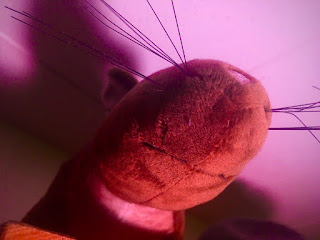Maeve Jackson Artist Talk
I thought the artist talk by Maeve Jackson was interesting and that she was able to tie her art with the experiences that it came from in the first place. Her first gallery analyzed the idea of care-taking. She uses herself as the subject when the art in the first gallery aims at the medium of filmmaking. She explains that she was the director, editor, and performer because she was exploring how she could make the work by herself. This explores ideas of human autonomy which is seen in The Medium is the Massage. A McLuhan quote from the book that would connect to her art would be, "We employ visual and spatial metaphors for a great many everyday expressions" (117). These visual and spatial metaphors can be seen primarily in the gallery in which the art is held. The first gallery is in a darker space with two screens displaying her art while the second gallery is in an all-white room depicting her photos and two sculptures in the middle of the room. The second gallery was more straight forward in that each of the photos and sculptures had a story behind it. One of the main themes from the second gallery was movement, which can be seen in the frames that house the photos. The frames were actually beehive frames so that the pieces could be transported easily. The same thing can be said about the sculptures, which were CRT televisions inside a wheel barrel that can be picked up and transported around. With this gallery, Maeve can spread her message easily because her art pieces are so portable. Overall, the talk gave me more insight into art talks and how they can change the perception of an art gallery piece by adding the backstory behind it.

Love how you tied the artist talk to the text of the class. Jackson's works seem to be the perfect medium for what we're studying currently. :)
ReplyDeleteExactly!
DeleteI loved how you explored that idea that she was also the subject of her piece. Her work is a representation of herself and her experiences. I also thought it was interesting to see how different people viewed her work.
ReplyDelete